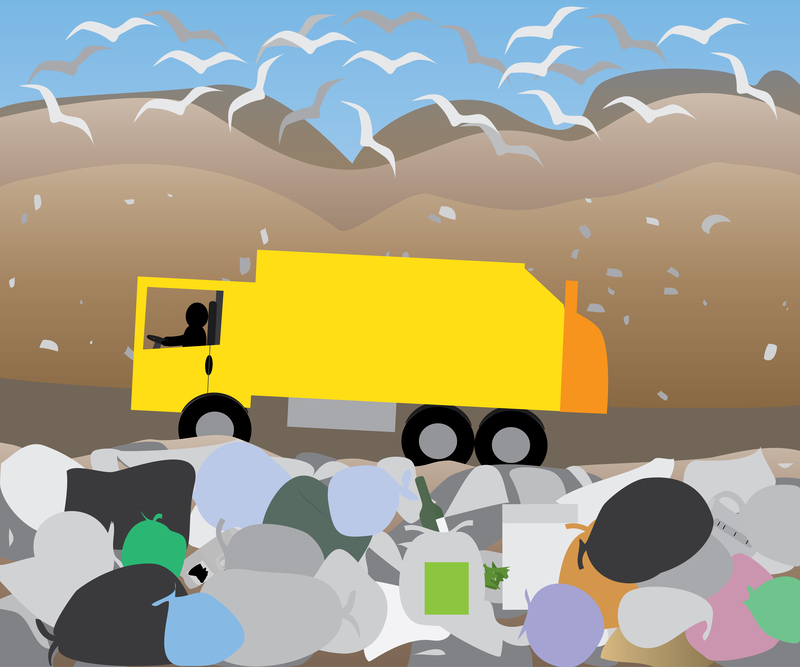What You Need to Know About Responsible PPE Waste Handling
Personal Protective Equipment (PPE) has become an integral part of various industries, healthcare settings, and even daily life due to ongoing global health concerns. While PPE such as masks, gloves, gowns, and face shields protect individuals from exposure to harmful substances, they also create a significant environmental and health challenge after use. Responsible PPE waste handling is crucial to minimize potential hazards, ensure workplace safety, and reduce the environmental footprint. This comprehensive guide will help you understand the importance of proper PPE waste disposal and provide effective strategies to manage it responsibly.
Understanding PPE Waste and Its Environmental Impact
PPE waste refers to discarded items used for personal protection, including masks, respirators, gloves, gowns, shoe covers, and face shields. The surge in single-use PPE since the COVID-19 pandemic has escalated global waste generation, overwhelming landfills and introducing serious environmental concerns.
The Environmental Hazards of Improper PPE Disposal
- Plastic Pollution: Most masks and gloves are made from non-biodegradable plastics like polypropylene, which can persist in the environment for hundreds of years.
- Microplastic Generation: Disposed masks and gloves break into microplastics contaminating soil, water, and even entering the food chain.
- Wildlife Threats: Animals may ingest or become entangled in discarded PPE, leading to injury or death.
- Resource Waste: Excessive single-use PPE consumption increases resource extraction and manufacturing emissions.
Proper PPE waste management is not just an organizational mandate--it's a crucial step in protecting the environment and safeguarding public health.

Types of PPE Waste and Classification
For responsible PPE waste handling, it's vital to classify PPE waste appropriately, as the handling methods may differ depending on whether it is contaminated or non-contaminated.
1. General PPE Waste
- Non-contaminated items, such as masks or gloves worn by healthy individuals in non-medical settings.
- Can often be disposed of with regular trash, but recycling is not usually possible due to material composition.
2. Medical or Contaminated PPE Waste
- Items exposed to infectious materials, used in healthcare facilities, labs, or quarantine sites.
- Handled as biohazardous or clinical waste requiring special containment, treatment, and disposal protocols.
3. Industrial PPE Waste
- PPE exposed to chemicals, asbestos, or other hazardous substances in industrial environments.
- Managed as hazardous waste with strict compliance to regulatory guidelines.
Why Responsible PPE Waste Handling Is Essential
-
Prevents environmental pollution:
*Improper disposal leads to persistent litter and toxic buildup in ecosystems.* -
Protects public health:
*Reduces the risk of infection spread and accidental exposure to hazardous materials.* -
Ensures regulatory compliance:
*Meets local, state, and global disposal standards, avoiding fines or legal consequences.* -
Promotes sustainability:
*Encourages companies and individuals to adopt eco-friendly waste reduction strategies.*
Best Practices for Responsible PPE Waste Disposal
Implementing responsible PPE waste disposal practices not only safeguards the environment but also enhances workplace safety. Here are key steps to follow:
1. Segregate PPE Waste at the Source
- Place labeled bins for general, contaminated, and recyclable PPE waste in accessible locations.
- Use color-coding or signage to reduce mixing of hazardous with general waste.
2. Use Certified Disposal Bags and Containers
- For contaminated PPE, use leak-proof, puncture-resistant, and tamper-evident biohazard bags.
- Industrial waste should go into containers rated for chemical or hazardous material handling.
3. Proper PPE Collection and Storage
- Store collected PPE waste in a secure, ventilated area, away from high-traffic zones.
- Limit access to authorized personnel to prevent tampering or accidental contact.
4. Timely and Safe Transport
- Use authorized waste haulers familiar with local regulations on PPE waste transport.
- Ensure all bags are sealed and labeled appropriately before transport.
5. Environmentally Responsible PPE Treatment
- Medical PPE waste should be disinfected through autoclaving, incineration, or chemical treatment as required.
- General PPE, if not contaminated, can sometimes be energy-recovered through waste-to-energy plants.
- Some companies offer recycling solutions specifically for PPE made from recyclable plastics.
Compliance with PPE Waste Disposal Regulations
Adhering to local and international regulations is fundamental for effective PPE waste management. Regulations often specify criteria for storage, transport, treatment, and documentation. Ensure compliance with:
- OSHA (Occupational Safety and Health Administration) and related federal guidelines in the U.S.
- EPA (Environmental Protection Agency) waste disposal requirements.
- WHO (World Health Organization) and CDC recommendations for PPE handling in healthcare settings.
- Local and state environmental and health departments.
What Employers and Facility Managers Should Do
- Conduct risk assessments to determine PPE use and corresponding waste category.
- Develop and implement a PPE waste management plan as part of your overall safety protocols.
- Maintain clear documentation of waste generation, collection, transport, and treatment.
- Train staff on proper procedures, emergency response, and safety measures related to PPE waste.
Reducing PPE Waste: Prevention Strategies
While correct disposal is important, minimizing the generation of PPE waste is even more sustainable. Here are proactive strategies to reduce your facility's PPE waste footprint:
1. Use Reusable PPE When Possible
- Invest in PPE that is durable and can be sanitized and reused, such as washable fabric masks or gowns.
- Ensure proper cleaning and disinfection protocols between uses.
2. Train Employees on PPE Conservation
- Avoid unnecessary PPE use by assessing real risks and educating staff on correct donning and doffing procedures.
3. Partner With Specialized PPE Recycling Programs
- Some commercial services now offer PPE recycling solutions for items like masks, face shields, and gloves, diverting them from landfill.
PPE Waste Recycling: Opportunities and Challenges
Can PPE be recycled? The answer depends on the type of material and level of contamination.
- Recyclable PPE: Some single-use masks and face shields made from pure plastics can be processed in specialized facilities, provided they are not contaminated with biohazards.
- Challenges: Most curbside recycling programs cannot accept used PPE due to contamination risks and complex material composition (such as multi-layer masks with metal nose pieces and elastic bands).
- Innovative Solutions: New recycling methodologies are emerging:
- Melting plastics to create new materials for infrastructure or industrial use.
- Converting waste to energy via incineration under controlled conditions, reducing landfill burden.
*If opting for PPE recycling, consult with specialized PPE waste handlers who meet environmental and safety standards.*
Risks of Improper PPE Waste Handling
Failing to manage PPE waste responsibly can result in numerous negative consequences:
- Legal Action and Fines: Violations of waste management regulations carry heavy penalties for businesses and healthcare providers.
- Infectious Disease Spread: Improperly disposed infectious PPE increases exposure risk for waste workers and the general public.
- Reputational Damage: Organizations that don't demonstrate environmental stewardship may lose public trust.
- Environmental Degradation: Littered PPE pollutes streets, water bodies, and parks, harming humans, animals, and ecosystems.
Steps to Develop an Effective PPE Waste Handling Program
-
Perform a Waste Audit
Assess the types and volume of PPE waste generated, identify high-risk areas, and set waste reduction goals. -
Establish Clear Procedures
Create written protocols for segregation, storage, and transport of various PPE waste streams. -
Provide Adequate Resources
Supply labeled bins, certified bags, and proper storage containers at all points of PPE use. -
Train Staff Regularly
Include PPE waste handling in safety and orientation programs, updating as standards evolve. -
Monitor and Evaluate
Regularly review waste handling practices, collect feedback, and improve protocols for maximum safety and efficiency.
Key Takeaways: Your Responsibility for Safe PPE Waste Disposal
- Awareness is crucial: Understand the risks and follow best practices for handling your used PPE.
- Segregation, storage, and transport matter: Separate contaminated PPE, store securely, and use authorized handlers for collection and disposal.
- Regulatory compliance protects all: Follow local guidelines for PPE waste disposal to avoid penalties and protect public health.
- Reduction is better than reaction: Choose reusables, train teams, and engage in recycling initiatives when possible.

Conclusion
Responsible PPE waste handling is a shared responsibility. Whether you are a healthcare worker, industrial manager, business owner, or a concerned citizen, your actions in managing PPE after its useful life have direct impacts on public health and the environment. By prioritizing safe disposal, staying informed about regulations, exploring recycling options, and striving to reduce waste at the source, you contribute to a cleaner and safer world for everyone.
If you're looking to implement a responsible PPE waste program, start today by educating your team, partnering with reputable waste handlers, and reviewing your practices for continuous improvement.*
Frequently Asked Questions (FAQ) About PPE Waste Handling
-
Q: Can you recycle disposable masks and gloves?
A: Most curbside recycling centers do not accept PPE due to contamination. Specialized programs and some industrial recyclers can process non-infectious PPE made from single-material plastics. -
Q: How should households dispose of used PPE?
A: Place used masks and gloves in a closed, lined garbage bin. Do not flush them down the toilet or attempt to recycle unless specified by your local waste authority. -
Q: What measures protect waste workers from PPE hazards?
A: PPE waste should be sealed in suitable bags, labeled, and collection staff should wear protective gear and receive regular training. -
Q: Are there biodegradable PPE options?
A: Some manufacturers produce masks and gloves from bio-based or compostable materials, but availability is limited, and regional composting infrastructure may vary.
By following these guidelines and encouraging responsible PPE waste management in your community or workplace, you help build a safer, more sustainable future for all.